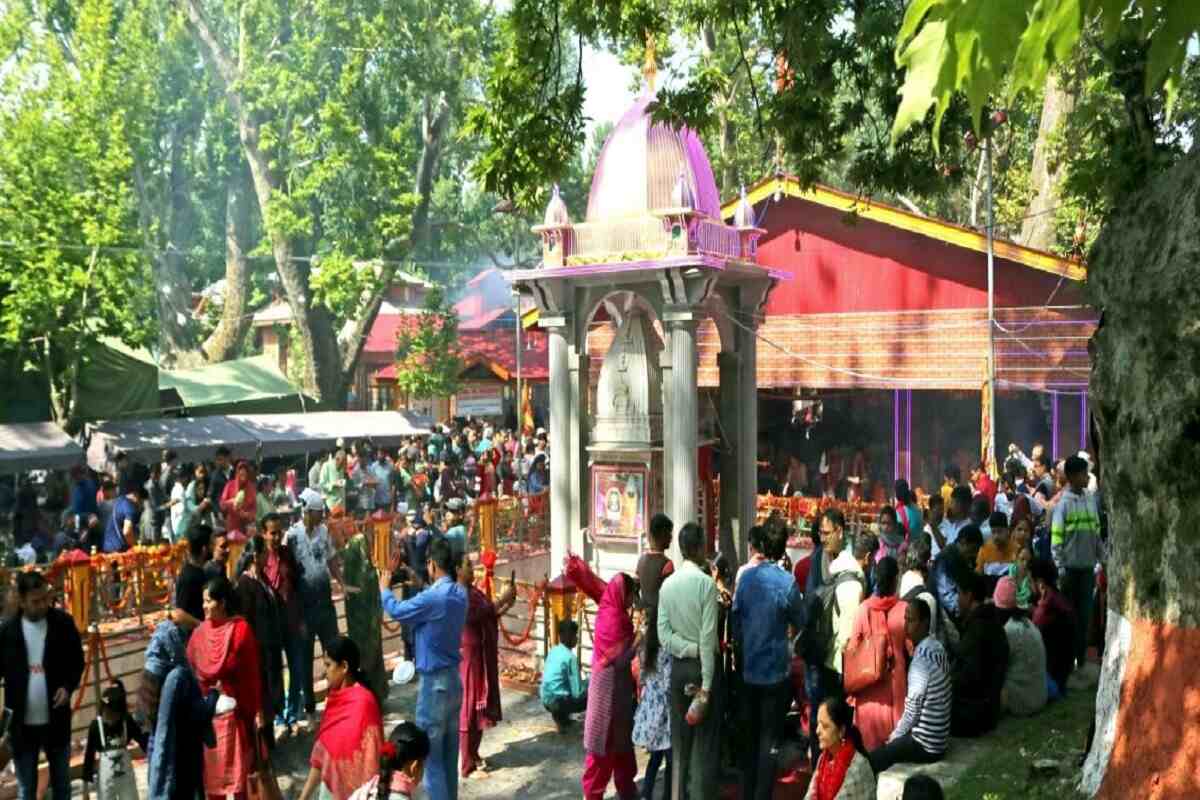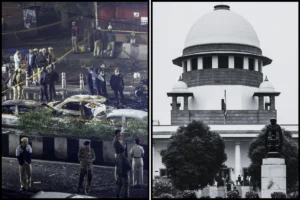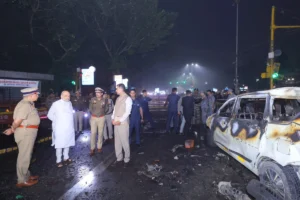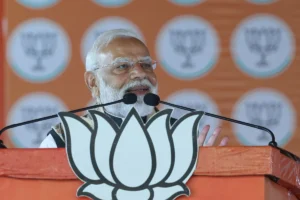
Kheer Bhawani Temple
Nestled amid the serene village of Tulamula in Ganderbal district, the Kheer Bhawani Temple stands as a testament to the unwavering devotion of Kashmiri Hindus.
Dedicated to the revered Hindu goddess Kheer Bhavani, this ancient temple holds deep significance in the hearts of the devotees. From its sacred spring, which changes hues, to the annual Kheer Bhawani Mela, where thousands gather, the temple is a sanctuary of faith and spirituality.
Temple’s significance and lore
Kheer Bhawani Temple, also known as Ksheer Bhawani or Ragnya Devi temple, is a cherished place of worship for Kashmiri Hindus. The resident deity, Kheer Bhawani, holds a special place in their hearts, serving as their protective patron deity, Kuladevi. The term “kheer” refers to a milk and rice pudding, symbolising the offering made to propitiate the goddess. The temple’s sacred spring, enveloping the goddess, is believed to possess divine properties, with its waters known to change colour, reflecting various shades of red, pink, orange, green, blue, and white. However, the presence of black water is considered inauspicious.
Historical background and rennovations
Origins of Kheer Bhawani Temple date back centuries and find mention in Kalhana’s Rajtarangini. The sacred spring of Tula Mula, where the temple stands today, was once lost due to floods that engulfed the area. However, through a divine revelation, Yogi Krishna Pandit Taploo of Bohri Kadal, Srinagar, rediscovered the location of the holy spring in a dream, guided by the goddess herself. The temple and its surroundings underwent significant renovations under the patronage of Maharaja Pratap Singh and further enhancements by Maharaja Hari Singh. Majestic chinar trees, casting a serene shade, provide a tranquil space for pilgrims to rest and reflect.
Kheer Bhawani Mela: A grand celebration of faith
Every year, the Kheer Bhawani Mela, celebrated during Jyeshtha Ashtami (Zyeshta Ashtami), brings together Kashmiri Hindus, pilgrims, and tourists in a joyous congregation. The mela holds deep cultural and spiritual significance, symbolising the unity and resilience of the community. Lt. Colonel Anil Kumar, who played a pivotal role in restoring the mela, highlights its importance, stating, “The Kheer Bhawani Mela is not merely a gathering; it is an affirmation of our shared heritage and the collective strength of the Kashmiri Hindu community.”
Perspectives and insights
Aarushi Malik, a noted historian, shares, “The legends associated with Kheer Bhawani Temple reflect the profound spiritual connection between devotees and the goddess. The journey from Sri Lanka to Tulmul, guided by divine intervention, serves as a metaphor for the goddess’s eternal grace and the unwavering devotion of her followers.”
Sanju kumar, a pilgrim, expresses his devotion, saying, “For us, Kheer Bhawani Temple is not just a place of worship. It is a sanctuary where we find solace and strength. The annual mela is a time of renewal, rekindling our faith and forging connections with fellow devotees.”
The Kheer Bhawani Temple and the Mela stand as beacons of faith, spirituality, and unity in the heart of Kashmir. From its ancient origins to its vibrant celebrations, the temple encapsulates the enduring legacy of devotion and legends. As pilgrims gather under the shade of chinar trees, immerse themselves in the sacred spring’s ever-changing hues, and partake in the annual mela, the temple serves as a powerful symbol of resilience, cultural heritage, and the indomitable spirit of Kashmiri Hindus.
(Source ANI)
To read more such news, download Bharat Express news apps


















